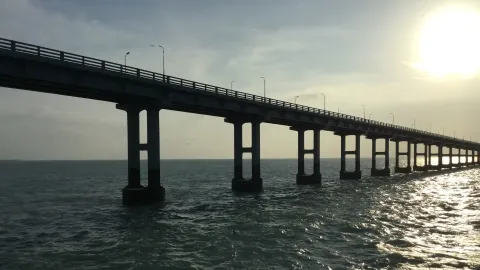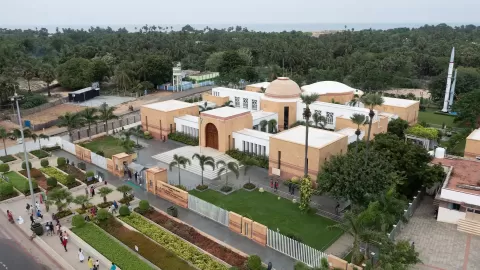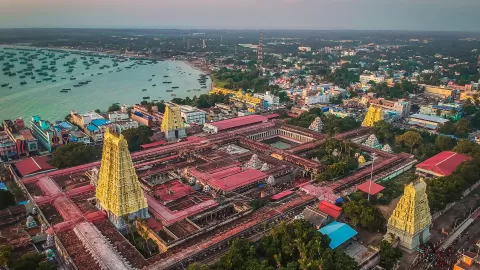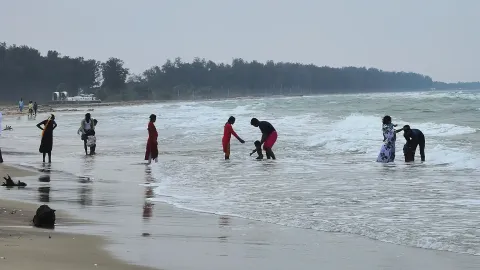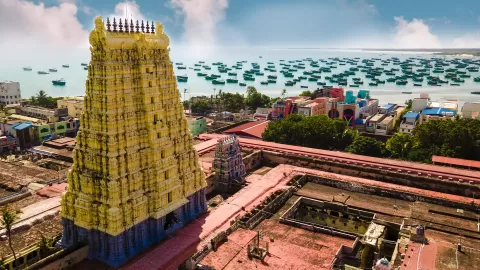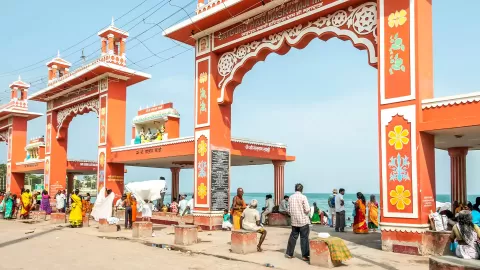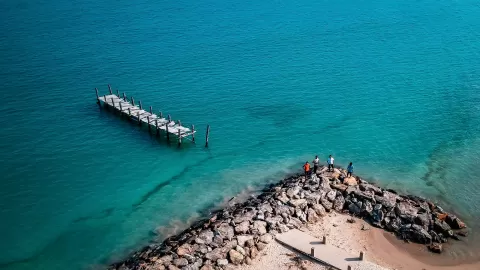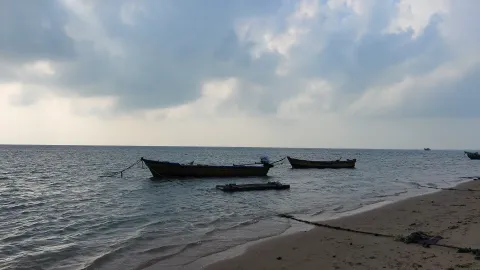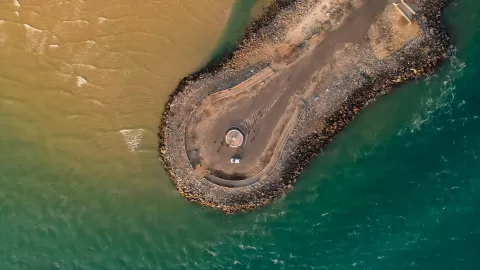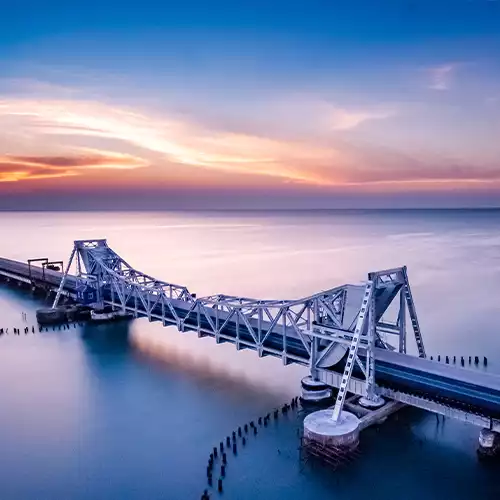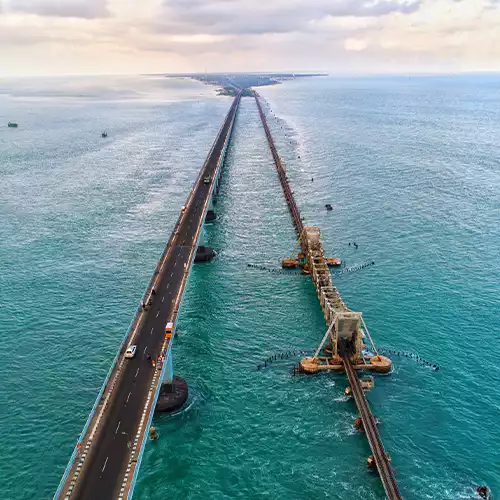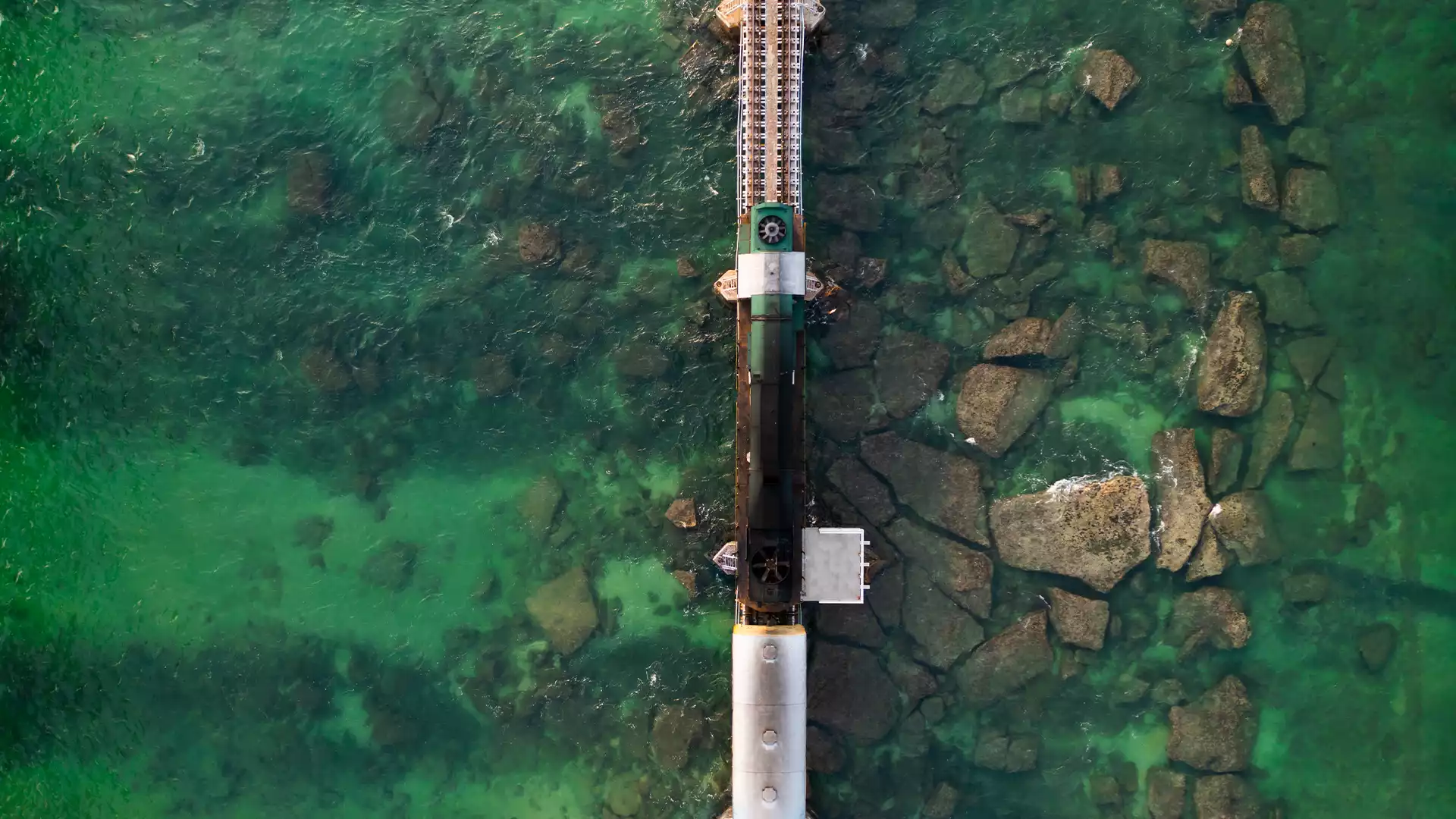One of India’s finest engineering marvels in India is the much-acclaimed Pamban rail bridge in Rameswaram that connects the island of Rameswaram to the mainland. The Pamban bridge holds historical significance as the first-ever bridge built across the sea in India.
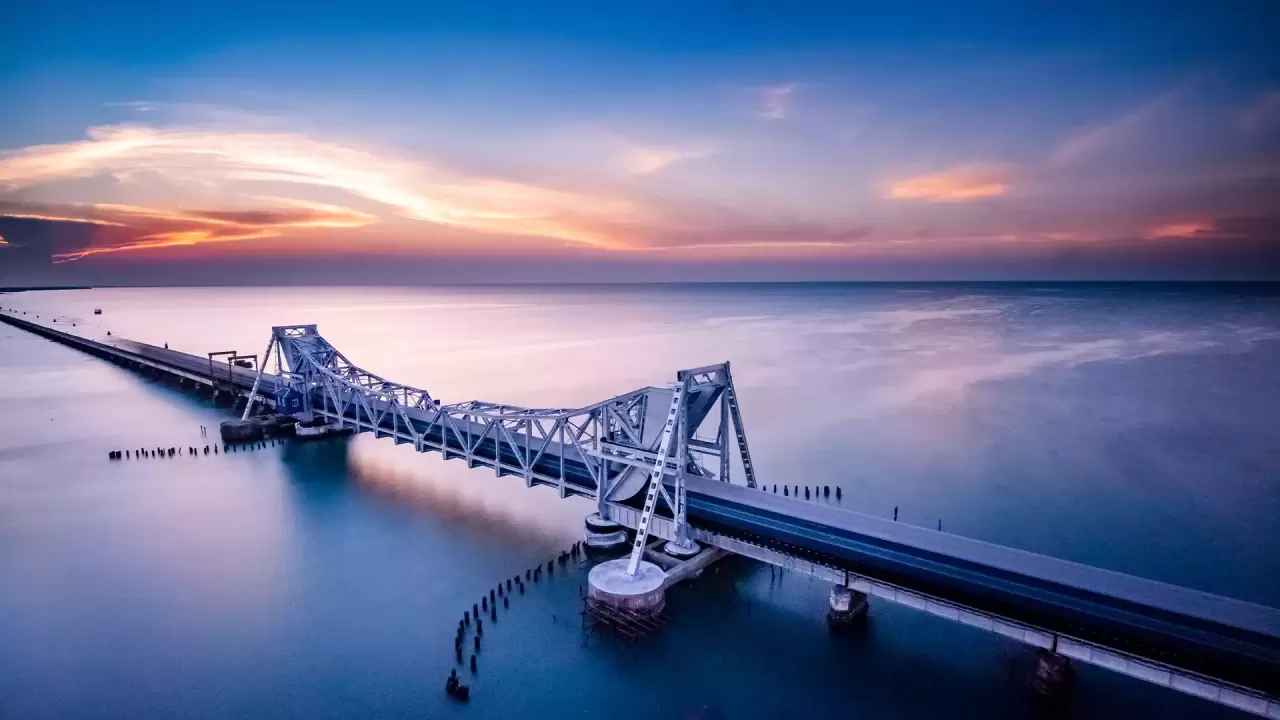
The efforts for the construction of the Pamban rail bridge began as early as in the 1870s when the British government decided to expand trade connectivity to Sri Lanka. Stretching to about 2.2 km, and with 143 piers, it was officially commissioned in 1914. It is the second-longest sea bridge in India after Mumbai’s Bandra-Worli Sea Link. The Pamban Rail Bridge works on the Scherzer rolling lift technology to allow ferry movement, which opens upwards at an angle of 90 degrees. The Pamban Bridge has always been marvelled at during the train journeys that offer jaw-dropping views of the blue expanse of the Arabian Sea.
Considered to be the longest bridge in India constructed over the bay, the Pamban rail bridge used to be the only link between Rameswaram and the mainland until 1988, after which a road bridge was built parallel to it.
The bridge has survived major cyclones that severely affected Dhanushkodi, the thriving part of the town. The bridge was later renovated and restored in just 46 days. It was further strengthened in 2009 for the transport of goods.
A new Pamban bridge is also being constructed with state-of-the-art technologies which would make it India’s first vertical lift railway sea bridge. The new bridge will be around 2.2 km long, and it will be possible to lift it to a height of 22 metres above sea level. The new construction is also expected to ease the influx of pilgrim visits to Rameswaram and Dhanushkodi every year.


